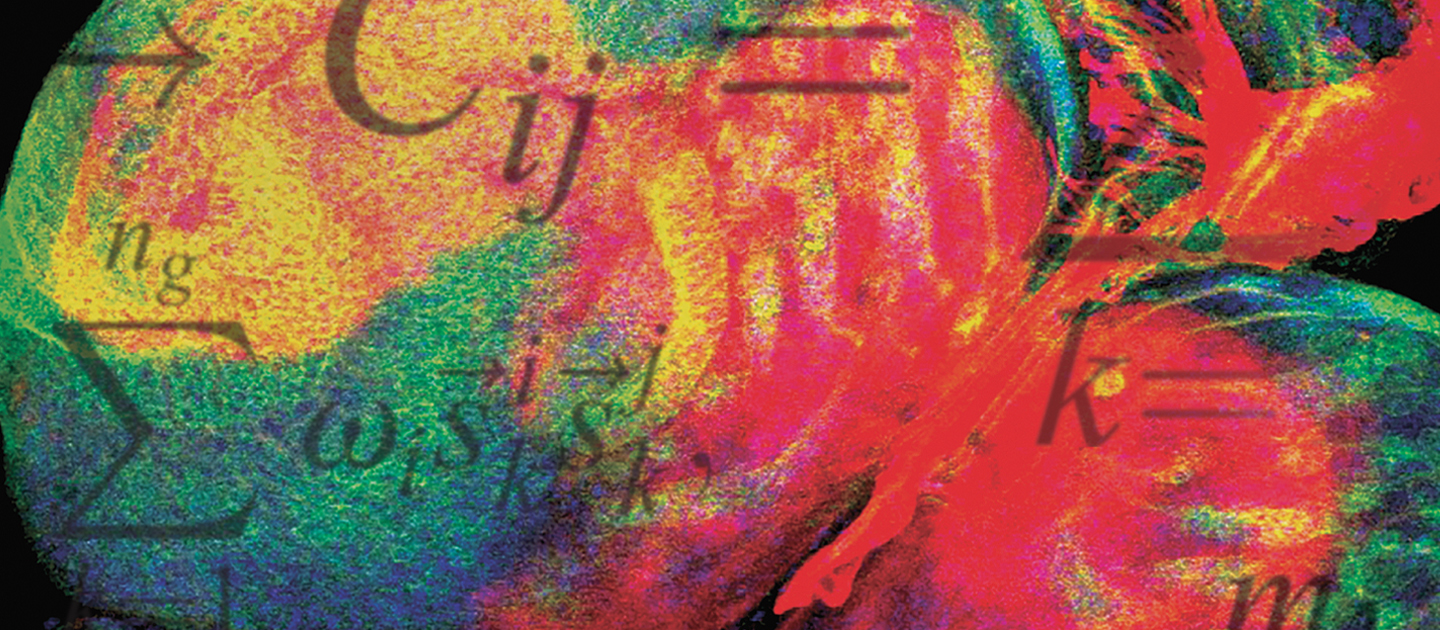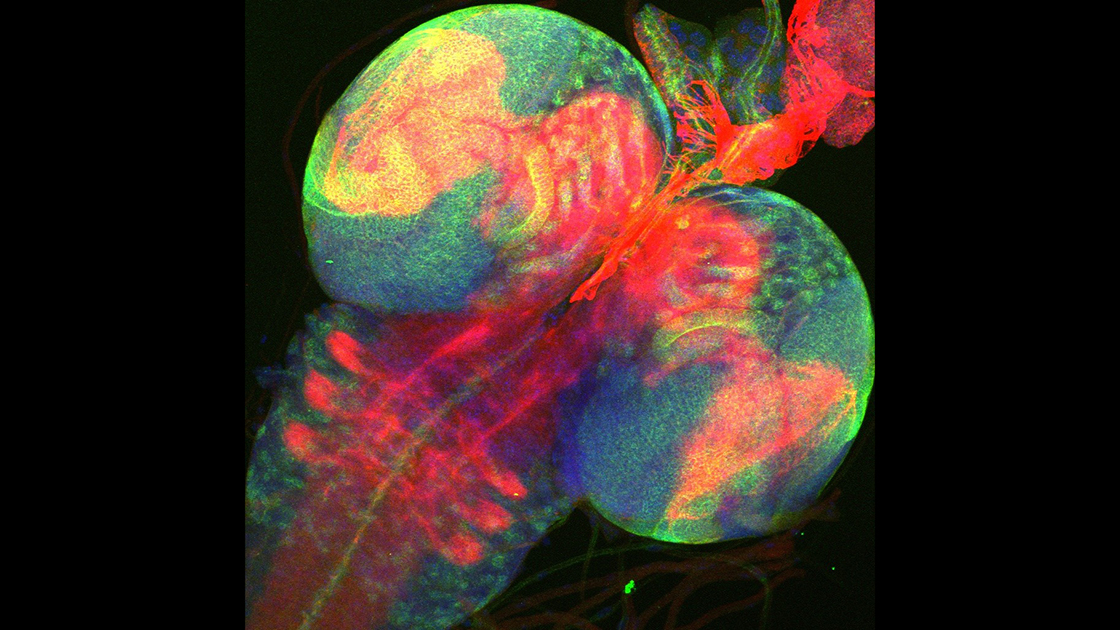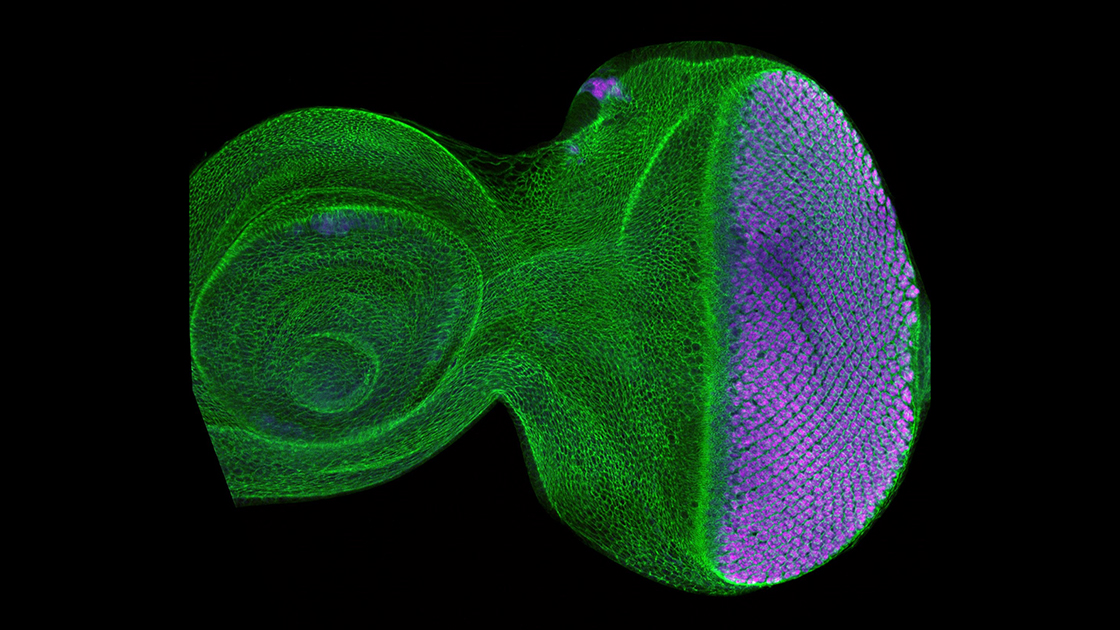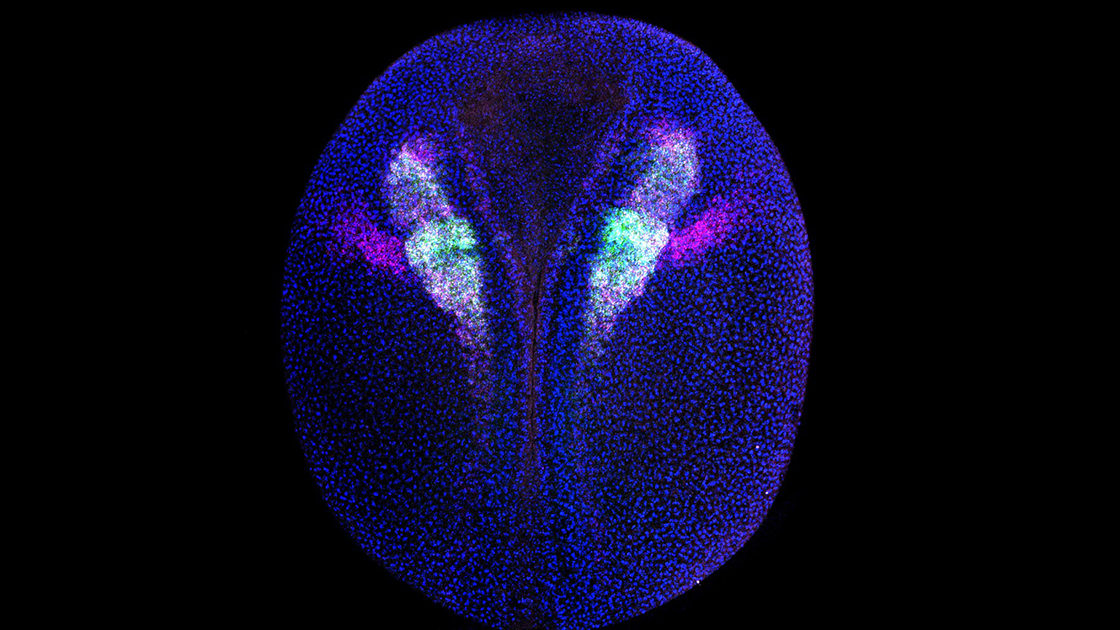Applying Math to Answer Life's Fundamental Questions
In the new National Institute for Theory and Mathematics in Biology, Northwestern Engineering faculty will decode biological findings using the language of mathematics.

The fruit fly’s eye consists of a highly patterned hexagonal lattice of 800 clusters of photoreceptor cells. Some of the secrets as to how this pattern formed remained a mystery until 2022.
That’s when an interdisciplinary research team of biologists and applied mathematicians, including Northwestern Engineering’s Madhav Mani, associate professor of engineering sciences and applied mathematics, discovered that contrary to what had been hypothesized, the formation of the pattern entails mechanical forces in addition to chemical signals transmitted between cells.
Not only did the breakthrough solve a biological design mystery, it also offered guiding principles that could help scientists understand how patterns form in nature. It could even assist bioengineers in developing synthetic visual sensors.
Our society is seeing an explosion in both the types and amounts of new experimental data being collected concerning biological systems. Mathematical theory has been tremendously successful in finding unifying principles and tools with which to understand physical and engineering fields. The goal of the NITMB is to provide a focal point for this to occur with biology.
William KathMargaret B. Fuller Boos Professor, NITMB Deputy Director of Research
This and other similar collaborative studies at Northwestern seek to answer some of the most fundamental questions in the life sciences: How are living systems maintained despite uncertain conditions in their ecosystems? How do organisms process information? What drives adaptation and how?
To further such exploration, Northwestern—in partnership with the University of Chicago—established the National Institute for Theory and Mathematics in Biology (NITMB) in September 2023, the only-of-its-kind institute in the United States. Supported by a $50 million grant from the US National Science Foundation (NSF) and the Simons Foundation, the NITMB will discover and develop new mathematics, and bring together mathematical and biological research to uncover the “rules of life” through theories, data-informed mathematical models, and computational and statistical tools.
“Our society is seeing an explosion in both the types and amounts of new experimental data being collected concerning biological systems,” says William Kath, Margaret B. Fuller Boos Professor, professor of engineering sciences and applied mathematics, and NITMB deputy director of outreach. “Mathematical theory has been tremendously successful in finding unifying principles and tools with which to understand physical and engineering fields. The goal of the NITMB is to provide a focal point for this to occur with biology.”
Applied Mathematicians as Translators
Helping realize NITMB’s goal will be faculty from Northwestern Engineering’s Department of Engineering Sciences and Applied Mathematics (ESAM), including Kath, Mani, Niall Mangan, Hermann Riecke, Daniel Abrams, and David Chopp. The group members are accustomed to applying their mathematical expertise to bring scientific clarity to questions across a breadth of subjects, from microscopic active matter to materials to synthetic biology.
“If mathematics is the language, then we aspire to be the translators,” Kath says. “We pride ourselves on using mathematics to help people in different disciplines understand what their experiments are showing them. We either adapt existing methods that have been used in other fields, or we help create new mathematical methods that can be used to increase that understanding.”
The department’s affinity with biology is nothing new. ESAM faculty have been integral in Northwestern’s successful NSF-Simons Center for Quantitative Biology (CQuB), established in 2018 within the Weinberg College of Arts and Sciences. Since then, the center has yielded scientific successes and a robust research community.
NITMB will build on CQuB’s foundation. Housed on the 35th floor of 875 North Michigan Avenue (the former John Hancock Center) in downtown Chicago, the institute will foster new partnerships and an international reach, host workshops and conferences, and support education initiatives with schools and community partners.
NITMB will also embrace a broader scientific vision initially focused on five research themes:
- Fidelity and variation. Understanding how living systems are maintained with a high degree of fidelity while being able to vary, adapt, and evolve.
- Fitness and optimization. Understanding how physical, chemical, and biological constraints shape the capabilities of living systems.
- Information processing. Developing a quantitative understanding of how living systems optimize information flow in the face of energetic, thermodynamic, and robustness constraints.
- Learning and adaptation. Shedding light on the mechanisms of biological learning and developing new, biologically inspired machine-learning algorithms.
- Prediction and anticipation. Investigating the mechanisms that enable anticipation, from simple circadian oscillations anticipating dawn and dusk to sophisticated strategies for optimizing foraging.
We are excited to expand our research and training programs to become the center of mathematical development to understand biology. NITMB will bring together an amazing spectrum of new ideas and up-and-coming scientists who will drive the next generation of research in mathematical biology.
Niall ManganAssistant Professor of Engineering Sciences and Applied Mathematics
Shaping New Directions in Applied Mathematics
Mangan, assistant professor of engineering sciences and applied mathematics and NITMB’s theme leader in fitness and optimization, expressed her excitement about the environment at the center, noting, “ESAM has a long track record of interdisciplinary work and building new mathematical techniques that enhance our ability to interpret and therefore impact many applications in science and engineering, including in biology.
“We are excited to expand our research and training programs to become the center of mathematical development to understand biology,” she adds. “NITMB will bring together an amazing spectrum of new ideas and up-and-coming scientists who will drive the next generation of research in mathematical biology.”
As engineering and biology become more intertwined, Riecke says NITMB presents an opportunity for ESAM to make its mark and stay ahead of the research curve. “It’s a natural direction for us to expand into,” he says. “It’s a big opportunity for us in the ESAM department. The activities of the NITMB and its close interactions between biologists and mathematicians will allow us to identify and shape new directions in applied mathematics. We get to be on the cutting edge of areas in which mathematics is going to make inroads in the future.”



